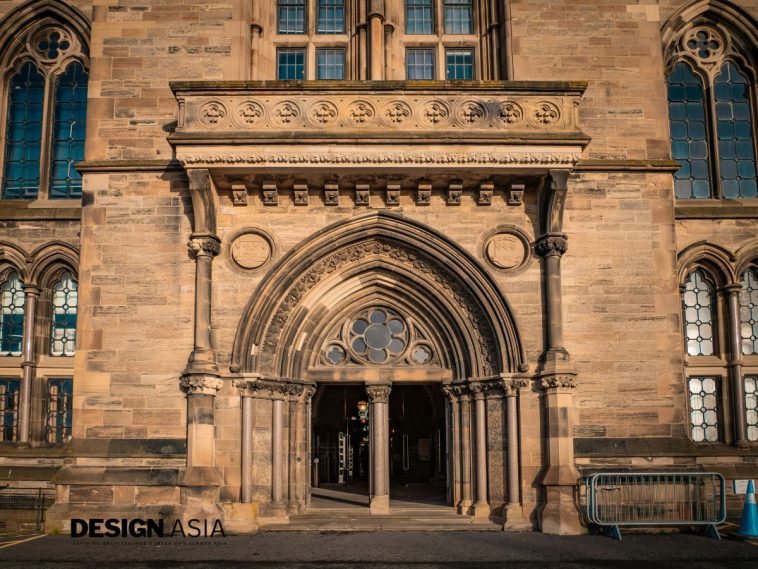The architecture of educational institutions is far more than just a physical space where learning occurs. It is a silent yet powerful force that shapes young learners’ minds, behaviors, and emotions. From the layout of classrooms to the design of communal spaces, every architectural element plays a crucial role in fostering an environment conducive to learning, creativity, and personal growth.
This blog delves into the intricate ways the architecture of schools, colleges, and universities influences young minds, exploring the psychological, social, and educational impacts of well-designed educational spaces.
The Psychological Impact of Architectural Design on Learning
The psychological impact of architectural design on students cannot be overstated. The way a building is designed can either stimulate or stifle a student’s ability to learn, focus, and engage with their surroundings. For instance, natural light is a critical factor in creating a positive learning environment. Studies have shown that classrooms with ample windows and skylights, which allow for an abundance of natural light, significantly improve students’ mood, concentration, and academic performance.
The absence of natural light, on the other hand, can lead to feelings of lethargy, disengagement, and even depression. This is because natural light regulates the body’s circadian rhythms, which in turn affects energy levels and cognitive function.
Color psychology is another essential aspect of architectural design that influences young minds. The colors used in classrooms, hallways, and common areas can evoke specific emotional responses.
For example, soft blues and greens are known to have a calming effect, making them ideal for spaces where concentration and focus are required. In contrast, vibrant colors like yellow and orange can stimulate creativity and energy, making them suitable for art rooms or areas where collaborative work takes place. The strategic use of color in educational architecture can thus create an environment that supports both the emotional well-being and academic success of students.
Moreover, the spatial layout of a school or university can significantly impact students’ sense of autonomy and independence. Open-plan designs, for instance, encourage collaboration and communication among students, fostering a sense of community and shared purpose. However, it is equally important to provide quiet, secluded spaces where students can retreat for individual study or reflection.
A well-balanced architectural design that incorporates both open and private spaces can cater to the diverse needs of students, helping them develop a sense of agency and self-regulation. This, in turn, contributes to their overall psychological well-being and academic success.
The Role of Architecture in Fostering Social Interaction and Community

Educational institutions are not just places of academic learning; they are also social hubs where young people form friendships, develop social skills, and build a sense of belonging. The architecture of these institutions plays a pivotal role in facilitating social interaction and fostering a sense of community among students. For example, the design of communal spaces such as courtyards, cafeterias, and student lounges can encourage informal interactions and create opportunities for students to connect. These spaces act as social catalysts, breaking down barriers and promoting inclusivity.
The concept of “third spaces” is particularly relevant in this context. Third spaces are areas that are neither strictly academic nor purely recreational; they are in-between spaces where students can relax, socialize, and engage in informal learning. Examples include outdoor seating areas, library nooks, and multipurpose halls. These spaces are designed to be flexible and adaptable, allowing students to use them in ways that suit their needs.
By providing such spaces, educational institutions can create an environment that supports both academic and social development, helping students build meaningful relationships and a strong sense of community.
Furthermore, the architecture of educational institutions can also reflect and reinforce the values of diversity and inclusivity. For instance, the inclusion of ramps, elevators, and accessible restrooms ensures that students with physical disabilities can navigate the campus with ease. Similarly, the design of gender-neutral restrooms and prayer rooms can create a more inclusive environment for students from diverse cultural and religious backgrounds.
By prioritizing accessibility and inclusivity in their architectural design, educational institutions can send a powerful message about their commitment to equality and respect for all students. This, in turn, helps young minds develop a deeper understanding and appreciation of diversity.
The Influence of Architectural Aesthetics on Creativity and Inspiration

The aesthetic qualities of educational architecture can have a profound impact on students’ creativity and inspiration. A visually appealing environment can stimulate the imagination, encourage exploration, and foster a love for learning. For example, the use of innovative and unconventional architectural designs, such as curved walls, asymmetrical shapes, and dynamic facades, can challenge traditional notions of space and inspire students to think outside the box. These design elements can serve as a constant source of inspiration, encouraging students to approach problems from new perspectives and embrace creative solutions.
The integration of art and culture into the architectural design of educational institutions can also play a significant role in shaping young minds. Murals, sculptures, and other forms of public art can transform a school or university campus into a vibrant and dynamic space that reflects the values and aspirations of the community.
These artistic elements not only enhance the aesthetic appeal of the campus but also provide students with opportunities to engage with and appreciate different forms of artistic expression. This exposure to art and culture can broaden students’ horizons, enrich their educational experience, and inspire them to pursue their creative passions.
Additionally, the incorporation of natural elements into architectural design can create a sense of harmony and connection with the environment. For example, the use of green roofs, indoor gardens, and water features can bring a touch of nature into the built environment, creating a calming and rejuvenating atmosphere. Research has shown that exposure to nature can reduce stress, improve mood, and enhance cognitive function. By integrating natural elements into their design, educational institutions can create a nurturing environment that supports both the mental and emotional well-being of students, allowing them to thrive academically and creatively.
The Long-Term Impact of Educational Architecture on Personal Development

The influence of educational architecture extends far beyond the immediate academic environment; it has a lasting impact on students’ personal development and future success. The skills and values that students acquire during their time in educational institutions are shaped not only by the curriculum but also by the physical spaces in which they learn and grow.
For instance, a well-designed campus that encourages exploration and discovery can instill a lifelong love for learning and a curiosity about the world. This sense of curiosity and intellectual engagement can drive students to pursue higher education, engage in lifelong learning, and contribute to society in meaningful ways.
Moreover, the architectural design of educational institutions can also shape students’ sense of identity and purpose. For example, a campus that reflects the cultural heritage and values of the community can help students develop a strong sense of belonging and pride in their roots.
This connection to their cultural identity can empower students to embrace their unique strengths and perspectives, enabling them to navigate the challenges of the modern world with confidence and resilience. Similarly, a campus that prioritizes sustainability and environmental responsibility can inspire students to become conscientious global citizens who are committed to protecting the planet and creating a more sustainable future.
Finally, the architecture of educational institutions can also influence students’ career aspirations and professional development. For example, state-of-the-art facilities such as science labs, art studios, and innovation hubs can provide students with hands-on learning experiences that prepare them for the demands of the workforce. These facilities can also serve as a source of inspiration, motivating students to pursue careers in fields such as science, technology, engineering, arts, and mathematics (STEAM). By providing students with access to cutting-edge resources and opportunities, educational institutions can help them develop the skills and knowledge they need to succeed in their chosen careers and make a positive impact on the world.
Conclusion
In conclusion, the architecture of educational institutions is a powerful tool that shapes young learners’ minds, behaviors, and futures. From the psychological impact of natural light and color to the social benefits of communal spaces and the inspirational qualities of aesthetic design, every architectural element plays a crucial role in creating an environment that supports academic success, personal growth, and social development. By prioritizing thoughtful and innovative architectural design, educational institutions can empower young minds to reach their full potential and become the leaders, innovators, and changemakers of tomorrow.


